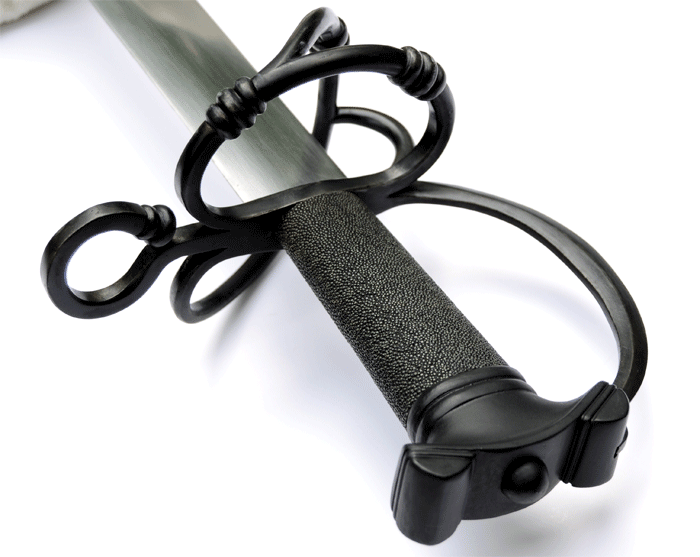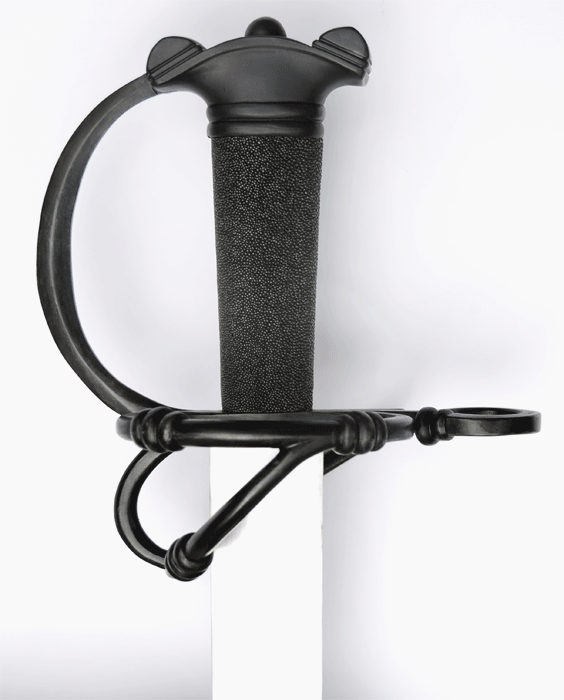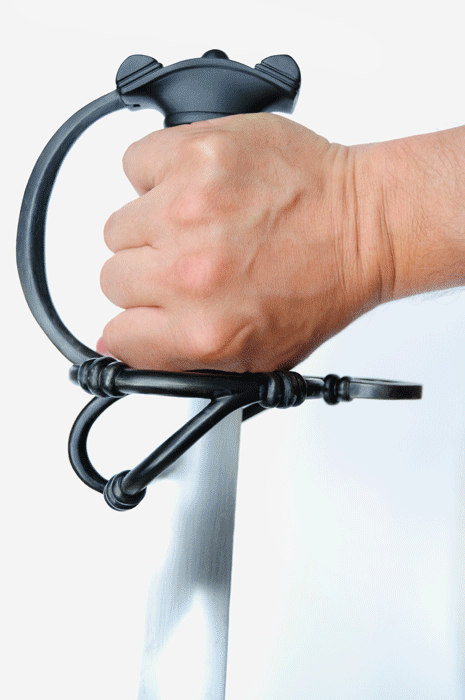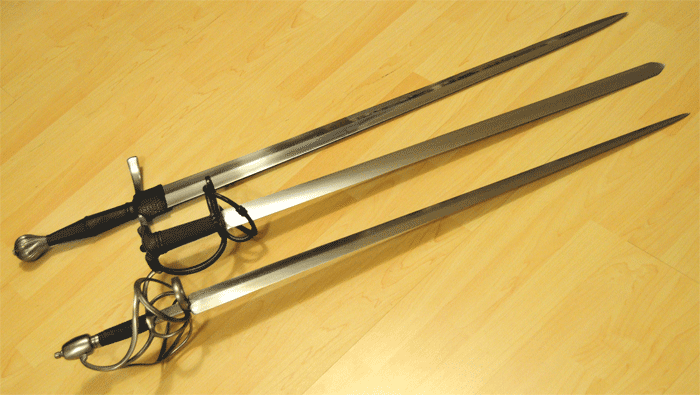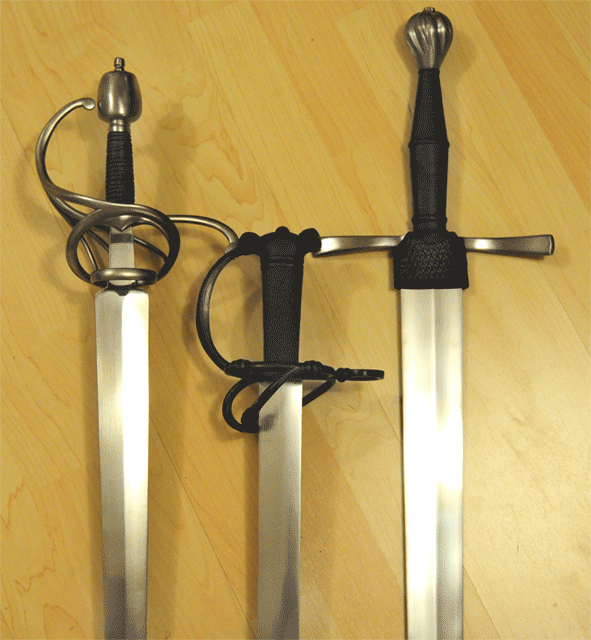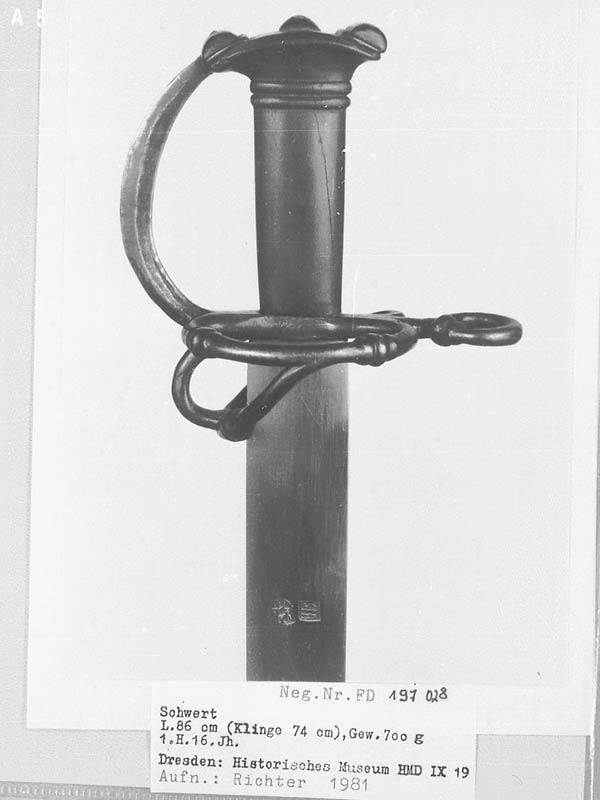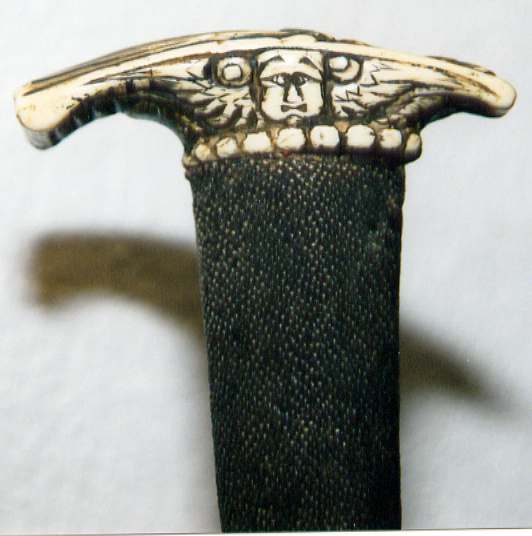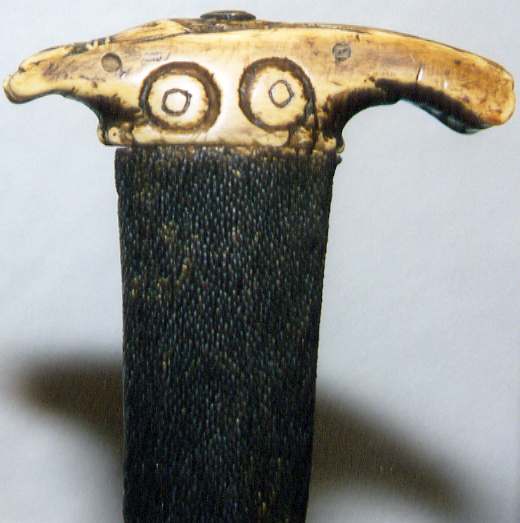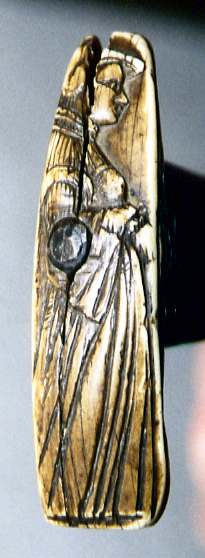Eljay has such extensive experience owning, repairing, making and otherwise handling arms of this period that I always think of him when I see an interesting complex hilt sword. I was lucky enough to commission one just before he stopped taking new commissions. He had done beautiful work on a Katzbalger for Nathan Robinson and that inspired this project. I wanted something simpler, and settled on an unusual example in the Staatliche Kunstsammlungen Dresden.
The museum has published two photos and some useful statistics, but has a very firm policy against cooperating with projects based on or inspired by objects in its collection. I didn't really want an identical copy of that weapon, though. I just wanted to understand it and look to it for inspiration and information about the general type, so the lack of additional details was not really an obstacle to this project.
Here's what the museum published:
Künstler / Herkunft: Deutsch
Titel: »Hauswehr aus dem Besitz des Reformators Martin Luther«
Datierung: um 1520 - 1540
Material / Technik: Rückenklinge, Schlagmarken; Gefäß Eisen, geschwärzt; Griffbezug Fischhaut; Scheide Holz, Leder schwarz, Pergament
Standort: Rüstkammer
Inventarnummer: IX 19
Abbildungsvorlage: Verfügbar als Ektachrome oder High-End-Scan
Bestellnummer: RK-IX-19-PS01.tif
Rechteinhaber: Staatliche Kunstsammlungen Dresden
Aufnahme: Franz Zadni?ek
Besondere Verwendungshinweise: Verwendung nur mit Genehmigung und Quellenangabe
I was puzzled by the designation of the weapon as a "Hauswehr" (home defense weapon) rather than "Katzbalger". It wasn't until later that we realized that the original's pommel and grip are of a piece and...cracked. They're made of wood! I still don't know if this was a way to satisfy guild rules or what, but one could argue that this piece is a knife. Yes, that gorgeous pommel you see here is boxwood! I have since noticed other short German edged weapons of this period with organic pommels of this general form (ivory, in one case). This unique and culturally distinctive element made the project all the more exciting for me.
We learned that the blade of the original has a rather abrupt pyramidal form that seems to be common in the period. I never cared much for that type and didn't understand it until I held the finished EBE project. If you want to keep the weapon length short and useful for close-range slashing, you need good breadth at the center of percussion, which in this case is pretty close to the tip. If you want the ability to thrust you could taper the blade to a point but that would either add unwanted length or, keeping the same length, sacrifice slashing ability. The abrupt taper to a point retains the breadth at the COP while adding some ability to thrust. I get it now, and have more respect for the solution.
I wanted the blade of this project to be as much as possible like the Dresden weapon. Eljay offered a number of wonderful options, including modified Albion and Del Tin blades of different, but still appropriate form. The lenticular blade he made with an eye to the Dresden weapon was my first choice, by far, even though this blade is not heat treated. It just harmonizes perfectly with the hilt, in my opinion. Eljay views this blade as unfinished, however, and devised an ingenious and invisible system for dismantling the weapon if I decide to change blades or have this one heat treated. Just the sort of detail one expects of this master craftsman.
My ultimate goal is to create a scabbard and by-knives for this weapon but that will have to wait for many months. For now, I'm just enjoying it in it's naked glory. :lol:
My big unanswered question concerns the Dresden weapon's connection with Martin Luther, as noted in the museum description. Luther and his followers were persecuted by the church/state and in danger of their lives, so it would make sense for a middle-class man of Luther's circle to carry a compact and austere civilian weapon of this type. My best guess is that the gold or yellow painted or glued label on the scabbard is either an early curator's note attributing the weapon to Luther's circle or is a contemporary Lutheran motto or inscription. I'd love to know, but I think that only the museum would be able to shed light on that point and, again, does not cooperate in any way with projects even just inspired by their holdings. If any of you German-speakers happen to visit Dresden and can read the scabbard inscription or otherwise describe it, I'd love to hear from you!
As far as I know, Nathan Robinson is the only other collector commissioning German projects from Eljay, but Eljay seems to have an uncanny eye for these weapons. If I could get back in the EBE que I would happily do so, but the last public information I have is that he is serving only collectors with standing annual orders. Some day....
Here are some basic stats on the EBE Hauswehr:
Overall Length: 34.25"
Blade Length: 29"
Grip Length: 3.5" (grip cover is juvenile ray, appropriate for the period and inspired by the catalog's mention of "Griffbezug Fischhaut"
Center of Gravity/Point of Balance: 5.75"
Center of Percussion: 21.5"
Weight: Unknown (no accurate scale at home). Suffice it to say that it's a very light weapon.
The group shots below, with my only two other finished swords, give a sense of the proportions.
